Australian Standard AS 1324.1 & 2 (2003) outlines the current method for testing filters for use in general ventilation and air-conditioning. This standard was itself generally adopted from the European Standard EN 779 (1993) which has been withdrawn in Europe and replaced with ISO 16890 Parts 1-4 in 2016. The ISO 16890 series is now seen as the most accurate representation of filtration efficiency as it tests the filter’s performance across the full 0.3 – 10 µm range. The AS 1324 series only tests 0.6 µm particle penetration/capture efficiency.
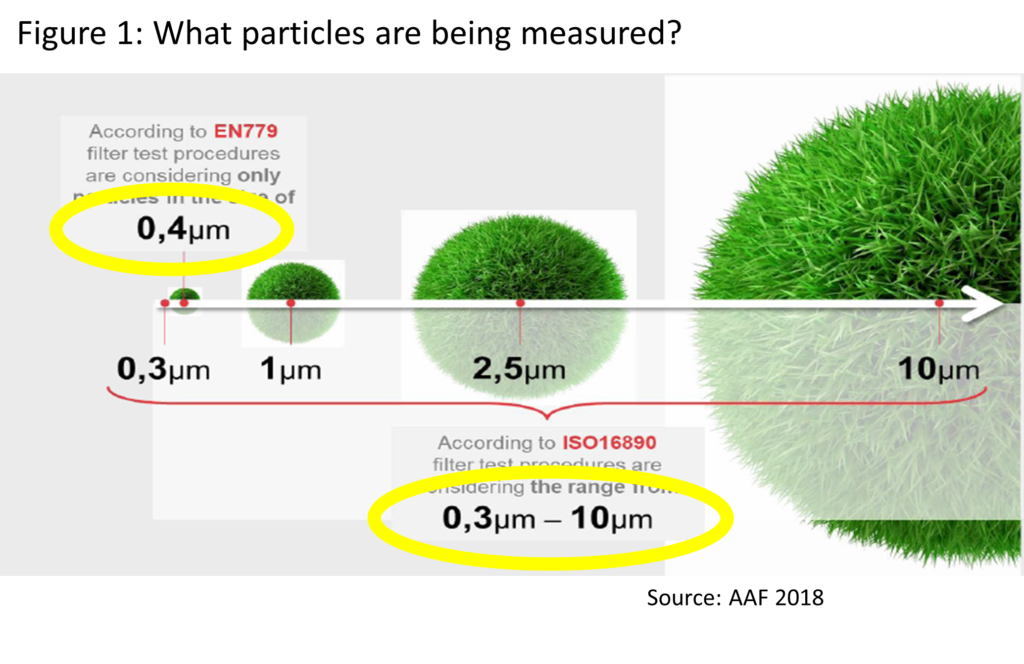
The AS 1324 test series has an error allowance of +/- 15% and ignores the effects of an electrostatic charge on the filter medium which can increase filter efficiency but is easily deactivated by charged particles. This means that an F5 filter tested under AS1324 which is supposed to have a 50-65% efficiency for PM2.5 particulates has been found to have an actual PM2.5 filtering efficiency range of between 20-50%. This should concern hospital engineers who should insist on filter specifications meeting the ISO 16890 standard, despite the fact it has not been formally adopted in Australia at this stage.
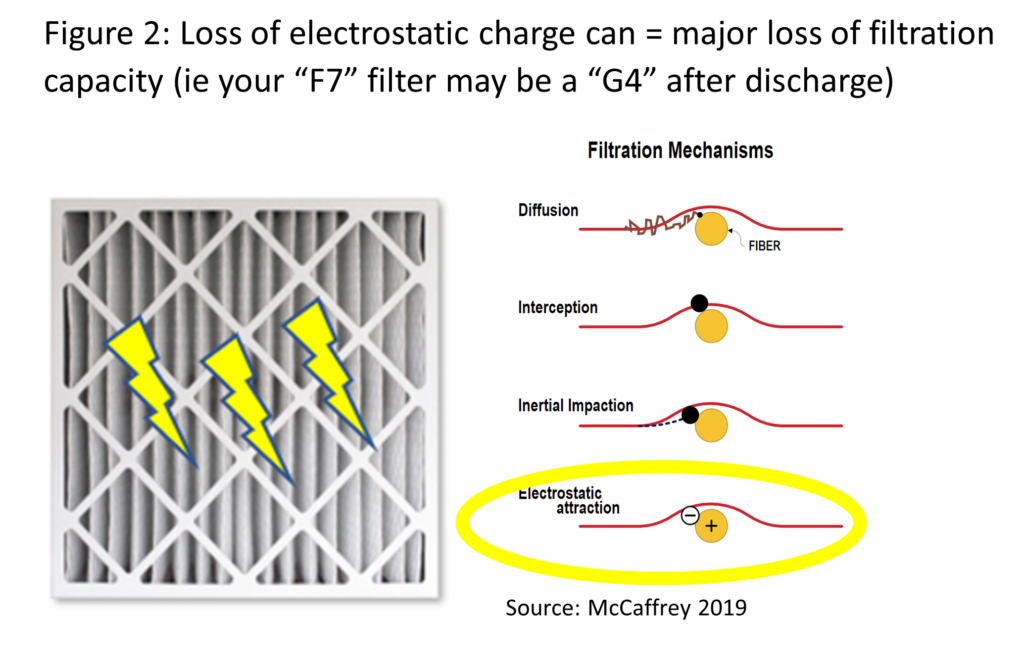
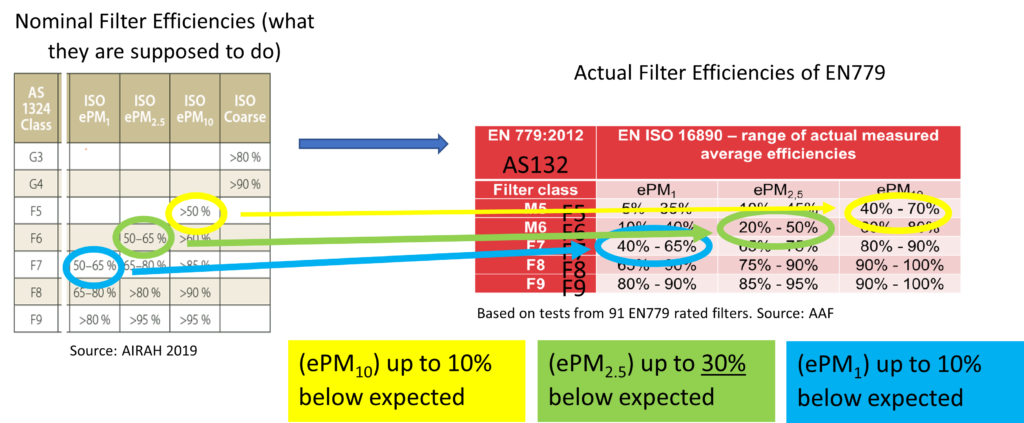
Filters tested to ISO 16890 can be grouped into one of four categories:
- ISOePM1 = minimum of 50% capture of particulates 0.3 – 1 µm range (55%; 60%; 65% etc)
- ISOePM2.5 = minimum of 50% capture of particulates 0.3 – 2.5 µm range (55%; 60% etc)
- ISOePM10 = minimum of 50% capture of particulates 0.3 – 10 µm range (55% etc.)
- ISO Course = <50% ePM10 captured by filter
The ‘e’ used in this clarification scheme is to denote “particulate matter efficiency” (ie capture) less than or equal to that size rather than the actual particle morphology/size range as understood by hygienists. For example, the ePM10 is the particle size fraction less or equal to 10 μm rather than a bell curve of particulates with an average morphology of 10 μm.
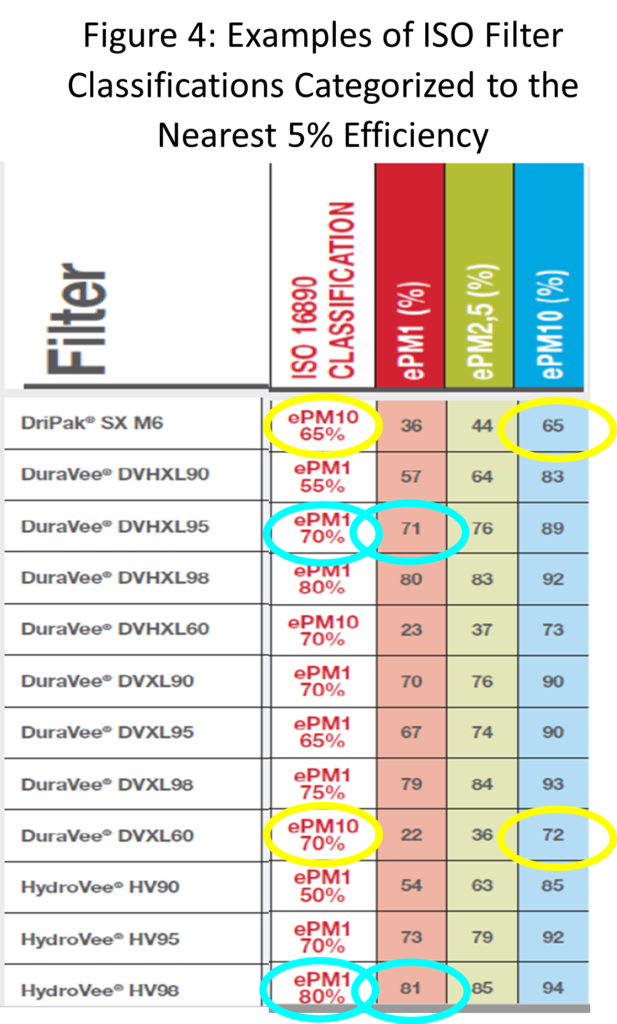
Choosing suitable filters for general ventilation is a function of the quality of outside air (OA) and the requirements for supply air (SA) quality. For example, the supply air requirements of a surgical facility vary significantly from a general office or workplace environment. Current recommendations for supplying air to general office environments post-COVID are for a minimum filter standard of ePM1 50%. Post-COVID, ASHRAE now recommends a minimum MERV13 (ISO ePM1>50%) for general offices.
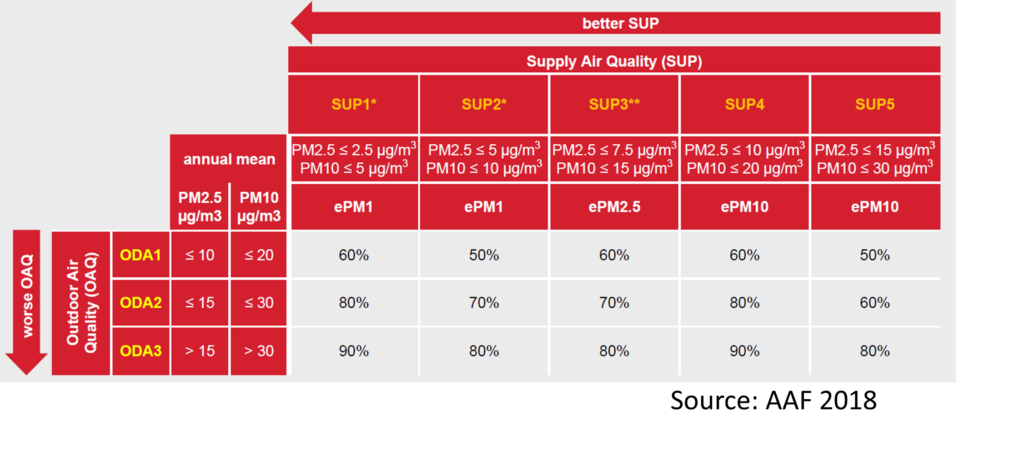
Framework for selecting a filter
References Cited:
- AAF International (2018) – How to select filters in an ISO16890 world? Retrieved from: https://afss.memberclicks.net/assets/docs/2018%20Spring%2C%20abstract%20S2.4.2.pdf
- AIRAH (2019) DA15 Air Filters and Cleaning Devices. Retrieved from: https://www.airah.org.au/DA_Manuals/2019_releases/DA15.aspx
- EUROVENT 4/23 (2018) – Selection of EN ISO16890-rated air filter classes for general ventilation applications. Retrieved from:
https://eurovent.eu/?q=articles/how-select-en-iso-16890-rated-air-filter-classes-general-ventilation-applications - McCaffrey (2019) Selection of Air Filters for Particulate Challenges: Retrieved from:
https://www.airah.org.au/AIRAH/Navigation/Education/Webinars/Past_webinars/2019_Air_Filters_in_the_Built_Environment.aspx
For more information, contact Gregor: gregor@opira.com.au 0400457926




